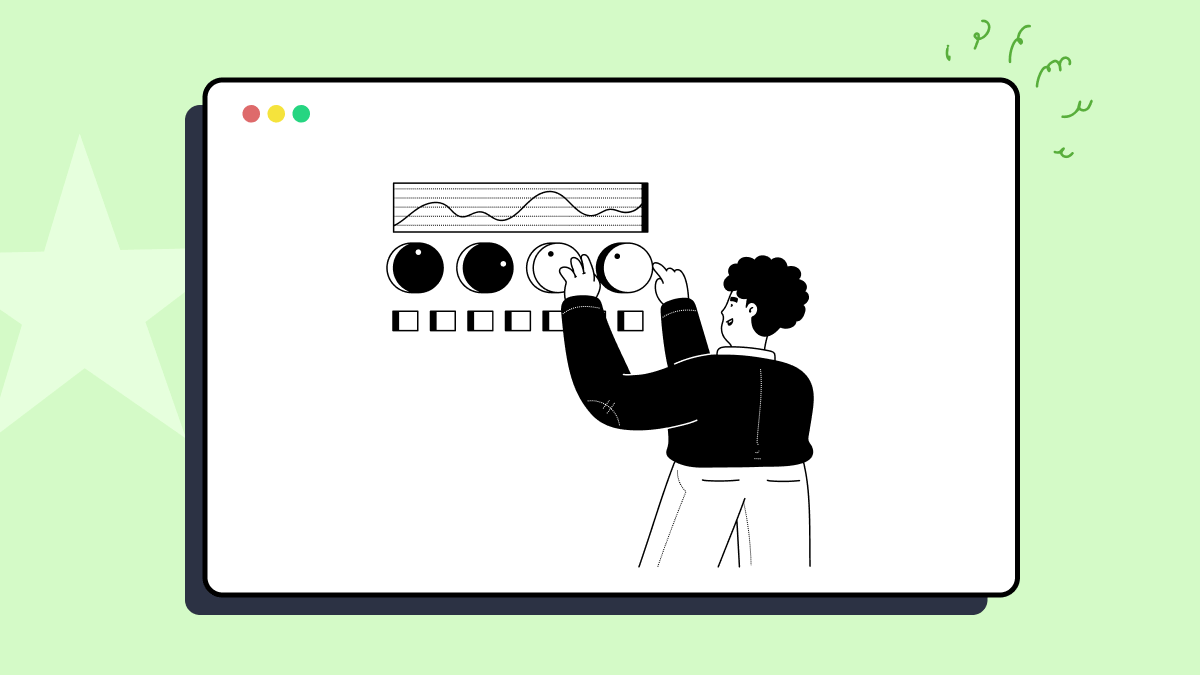How to use shouldStartWith method of org.assertj.core.error.ShouldStartWithPath class
Best Assertj code snippet using org.assertj.core.error.ShouldStartWithPath.shouldStartWith
...12 */13package org.assertj.core.error;14import static org.assertj.core.api.Assertions.assertThat;15import static org.assertj.core.error.ShouldStartWithPath.PATH_SHOULD_START_WITH;16import static org.assertj.core.error.ShouldStartWithPath.shouldStartWith;17import static org.mockito.Mockito.mock;18import java.nio.file.Path;19import org.assertj.core.internal.TestDescription;20import org.assertj.core.presentation.StandardRepresentation;21import org.junit.Test;22public final class ShouldStartWithPath_create_Test {23 @Test24 public void should_create_error_message() {25 final Path actual = mock(Path.class);26 final Path other = mock(Path.class);27 String actualMessage = shouldStartWith(actual, other).create(new TestDescription("Test"),28 new StandardRepresentation());29 assertThat(actualMessage).isEqualTo(String.format("[Test] " + PATH_SHOULD_START_WITH, actual, other));30 }31}...shouldStartWith
Using AI Code Generation
1import org.assertj.core.api.Assertions;2import org.assertj.core.api.PathAssert;3import org.assertj.core.api.PathAssertBaseTest;4import org.junit.jupiter.api.Test;5import java.io.File;6import java.nio.file.Path;7import java.nio.file.Paths;8import static org.assertj.core.api.Assertions.assertThat;9import static org.assertj.core.api.Assertions.catchThrowable;10import static org.assertj.core.api.Assertions.fail;11import static org.assertj.core.error.ShouldStartWith.shouldStartWith;12import static org.assertj.core.util.AssertionsUtil.expectAssertionError;13import static org.assertj.core.util.FailureMessages.actualIsNull;14import static org.assertj.core.util.PathsExceptionFactory.pathIsNull;15public class PathAssert_startsWith_Test extends PathAssertBaseTest {16 protected PathAssert invoke_api_method() {17 return assertions.startsWith("foo");18 }19 protected void verify_internal_effects() {20 verify(paths).assertStartsWith(getInfo(assertions), getActual(assertions), "foo");21 }22 public void should_fail_if_actual_path_is_null() {23 Path actual = null;24 AssertionError error = expectAssertionError(() -> assertThat(actual).startsWith("foo"));25 assertThat(error).hasMessage(actualIsNull());26 }27 public void should_fail_if_expected_path_is_null() {28 Path expected = null;29 Throwable thrown = catchThrowable(() -> assertThat(Paths.get("foo")).startsWith(expected));30 assertThat(thrown).hasMessage(pathIsNull());31 }32 public void should_fail_if_actual_path_is_not_relative() {33 Path actual = Paths.get("foo");34 AssertionError error = expectAssertionError(() -> assertThat(actual).startsWith("foo"));35 assertThat(error).hasMessage(shouldStartWith(actual, "foo").create());36 }37 public void should_fail_if_actual_path_does_not_start_with_expected_path() {shouldStartWith
Using AI Code Generation
1public class ShouldStartWithPath extends BasicErrorMessageFactory {2 public static ErrorMessageFactory shouldStartWith(Path actual, Path other) {3 return new ShouldStartWithPath(actual, other);4 }5 private ShouldStartWithPath(Path actual, Path other) {6 super("%nExpecting:%n <%s>%nto start with:%n <%s>", actual, other);7 }8}9public class PathAssert extends AbstractPathAssert<PathAssert, Path> {10 public PathAssert(Path actual) {11 super(actual, PathAssert.class);12 }13 public PathAssert startsWith(Path other) {14 paths.assertIsRelative(info, actual);15 paths.assertIsRelative(info, other);16 if (!actual.startsWith(other)) throwAssertionError(shouldStartWith(actual, other));17 return myself;18 }19}20public class PathAssert_startsWith_Test extends PathAssertBaseTest {21 protected PathAssert invoke_api_method() {22 return assertions.startsWith(Paths.get("foo"));23 }24 protected void verify_internal_effects() {25 verify(paths).assertIsRelative(getInfo(assertions), getActual(assertions));26 verify(paths).assertIsRelative(getInfo(assertions), Paths.get("foo"));27 verifyNoMoreInteractions(paths);28 }29}30public abstract class PathAssertBaseTest extends BaseTestTemplate<PathAssert, Path> {31 protected Paths paths;32 protected PathAssert create_assertions() {33 return new PathAssert(actual);34 }35 protected void inject_internal_objects() {36 super.inject_internal_objects();37 assertions.paths = paths;38 }39 protected void verify_internal_effects() {40 verifyNoMoreInteractions(paths);41 }42}43public abstract class BaseTestTemplate<ASSERT extends AbstractAssert<?, ACTUAL>, ACTUAL> {44 protected ASSERT assertions;45 protected ACTUAL actual;46 public void setUp() {47 assertions = create_assertions();48 actual = mock(actualClass());49 inject_internal_objects();50 }51 protected abstract ASSERT create_assertions();52 protected abstract void inject_internal_objects();53 protected abstract void verify_internal_effects();54 public void tearDown() {shouldStartWith
Using AI Code Generation
1import static org.assertj.core.api.Assertions.assertThat;2import static org.assertj.core.error.ShouldStartWithPath.shouldStartWith;3import static org.assertj.core.test.TestData.someInfo;4import static org.assertj.core.util.FailureMessages.actualIsNull;5import org.assertj.core.api.AssertionInfo;6import org.assertj.core.api.BaseTest;7import org.junit.Test;8public class ShouldStartWithPath_create_Test extends BaseTest {9 public void should_create_error_message() {10 String actual = "C:/projects";11 String expected = "C:/";12 String message = shouldStartWith(actual, expected).create(new TestDescription("TEST"), new TestRepresentation("TEST"));13 assertThat(message).isEqualTo(String.format("[TEST] %n" +14 "but did not."));15 }16 public void should_create_error_message_with_custom_comparison_strategy() {17 String actual = "C:/projects";18 String expected = "C:/";19 String message = shouldStartWith(actual, expected).create(new TestDescription("TEST"), new TestRepresentation("TEST"),20 new TestComparisonStrategy());21 assertThat(message).isEqualTo(String.format("[TEST] %n" +22 "but did not."));23 }24 public void should_create_error_message_when_actual_is_null() {25 String actual = null;26 String expected = "C:/";27 String message = shouldStartWith(actual, expected).create(new TestDescription("TEST"), new TestRepresentation("TEST"));28 assertThat(message).isEqualTo(String.format("[TEST] %n" +29 "but did not."));30 }shouldStartWith
Using AI Code Generation
1import org.assertj.core.api.Assertions.assertThat;2import org.assertj.core.error.ShouldStartWithPath;3String actual = "foo";4String expectedStart = "bar";5ShouldStartWithPath shouldStartWithPath = new ShouldStartWithPath(actual, expectedStart);6assertThat(actual).startsWith(expectedStart);7assertThat(actual).overridingErrorMessage("my error message").startsWith(expectedStart);8assertThat(actual).overridingErrorMessage("my error message").startsWith(expectedStart);9assertThat(actual).usingDefaultComparator().startsWith(expectedStart);10assertThat(actual).usingDefaultComparator().startsWith(expectedStart);11assertThat(actual).usingComparatorForType(String::compareToIgnoreCase, String.class).startsWith(expectedStart);12assertThat(actual).usingComparatorForType(String::compareToIgnoreCase, String.class).startsWith(expectedStart);13assertThat(actual).usingComparatorForFields(String::compareToIgnoreCase, "field1").startsWith(expectedStart);14assertThat(actual).usingComparatorForFields(String::compareToIgnoreCase, "field1").startsWith(expectedStart);15assertThat(actual).usingComparatorForFields(String::compareToIgnoreCase, "field1", "field2").startsWith(expectedStart);16assertThat(actual).usingComparatorForFields(String::compareToIgnoreCase, "field1", "field2").startsWith(expectedStart);17assertThat(actual).usingComparatorForFields(String::compareToIgnoreCase, "field1", "field2", "field3").startsWith(expectedStart);18assertThat(actual).usingComparatorForFields(String::compareToIgnoreCase, "field1", "field2", "field3").startsWith(expectedStart);19assertThat(actual).usingComparatorForFields(String::compareToIgnoreCase, "field1", "field2", "field3", "field4").startsWith(expectedStart);20assertThat(actual).usingComparatorForFields(String::compareToIgnoreCase, "field1", "field2", "field3", "field4").startsWith(expectedStart);21assertThat(actual).usingComparatorForFields(String::compareToIgnoreCase, "field1", "field2", "field3", "field4", "field5").startsWith(expectedStartshouldStartWith
Using AI Code Generation
1public void testShouldStartWith() {2 Path path = Paths.get("C:/home/user/test.txt");3 String expected = "C:/home";4 assertThat(path).as("Test if the path starts with the expected value").startsWith(expected);5}6public void testShouldStartWith() {7 Path path = Paths.get("C:/home/user/test.txt");8 String expected = "C:/home";9 assertThat(path).as("Test if the path starts with the expected value").startsWith(expected);10}11public void testShouldStartWith() {12 Path path = Paths.get("C:/home/user/test.txt");13 String expected = "C:/home";14 assertThat(path).as("Test if the path starts with the expected value").startsWith(expected);15}16public void testShouldStartWith() {17 Path path = Paths.get("C:/home/user/test.txt");18 String expected = "C:/home";19 assertThat(path).as("Test if the path starts with the expected value").startsWith(expected);20}Blogs
Check out the latest blogs from LambdaTest on this topic:
In general, software testers have a challenging job. Software testing is frequently the final significant activity undertaken prior to actually delivering a product. Since the terms “software” and “late” are nearly synonymous, it is the testers that frequently catch the ire of the whole business as they try to test the software at the end. It is the testers who are under pressure to finish faster and deem the product “release candidate” before they have had enough opportunity to be comfortable. To make matters worse, if bugs are discovered in the product after it has been released, everyone looks to the testers and says, “Why didn’t you spot those bugs?” The testers did not cause the bugs, but they must bear some of the guilt for the bugs that were disclosed.
In addition to the four values, the Agile Manifesto contains twelve principles that are used as guides for all methodologies included under the Agile movement, such as XP, Scrum, and Kanban.
While there is a huge demand and need to run Selenium Test Automation, the experts always suggest not to automate every possible test. Exhaustive Testing is not possible, and Automating everything is not sustainable.
Coaching is a term that is now being mentioned a lot more in the leadership space. Having grown successful teams I thought that I was well acquainted with this subject.
Automation Testing Tutorials
Learn to execute automation testing from scratch with LambdaTest Learning Hub. Right from setting up the prerequisites to run your first automation test, to following best practices and diving deeper into advanced test scenarios. LambdaTest Learning Hubs compile a list of step-by-step guides to help you be proficient with different test automation frameworks i.e. Selenium, Cypress, TestNG etc.
LambdaTest Learning Hubs:
- JUnit Tutorial
- TestNG Tutorial
- Webdriver Tutorial
- WebDriverIO Tutorial
- Protractor Tutorial
- Selenium 4 Tutorial
- Jenkins Tutorial
- NUnit Tutorial
- Jest Tutorial
- Playwright Tutorial
- Cypress Tutorial
- PyTest Tutorial
YouTube
You could also refer to video tutorials over LambdaTest YouTube channel to get step by step demonstration from industry experts.
Most used method in ShouldStartWithPath
Try LambdaTest Now !!
Get 100 minutes of automation test minutes FREE!!



